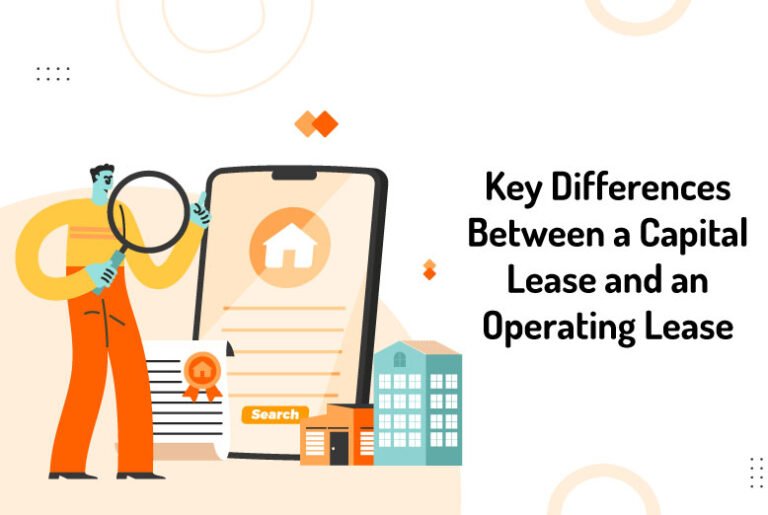When it comes to financing assets, businesses have various options available to them, with capital leases and operating leases being two common choices. While both types of leases allow companies to use assets without making an outright purchase, there are significant differences between them. Understanding these distinctions is crucial for businesses seeking appropriate financing solutions. In this article, we will delve into the key differences between capital lease and operating lease, exploring their varying characteristics, benefits, and implications.
Capital Lease: A Deeper Look
A capital lease, also known as a
, is a type of lease in which the lessee (the company) assumes substantially all the risks and rewards of ownership during the lease term. This means that the lessee essentially treats the leased asset as if they owned it, both financially and for accounting purposes. Under a capital lease, the company bears the responsibility for maintenance, insurance, and other costs related to the asset, similar to the responsibilities of an owner.
Some distinguishing features and benefits of a capital lease include:
- Fixed-Term Lease Agreement: Unlike an operating lease, a capital lease typically has a fixed-term agreement. This provides businesses with greater control and certainty over the asset’s usage within the specified lease period.
- Transfer of Ownership: A key characteristic of a capital lease is the potential transfer of ownership to the lessee at the end of the lease term. This means that the lessee enjoys the benefits of the asset’s residual value and may even have the option to purchase the asset at its predetermined price.
- Capital Lease Accounting: From an accounting perspective, capital leases require the lessee to record the leased asset as a capital expenditure on their balance sheet. Additionally, the lessee must also recognize the lease liability, which represents the obligations to make lease payments, mirroring the traditional asset ownership model.
- Tax Benefits: Businesses can often claim tax deductions for the interest expense associated with a capital lease. Moreover, capital leases may qualify for tax depreciation benefits, allowing the lessee to spread the asset’s cost over its useful life.
Understanding Operating Leases in Comparison
An operating lease is distinct from a capital lease in various aspects. Primarily, an operating lease is a form of off-balance-sheet financing. Unlike a capital lease, it does not result in the lessee assuming the risks and rewards of ownership. Rather, an operating lease merely involves renting an asset for a specified duration.
Outlined below are some key characteristics of an operating lease:
- Shorter Lease Terms: Operating leases typically have shorter lease terms than capital leases. These leases focus on the asset’s specific usage period, allowing businesses to upgrade or switch assets more frequently as technology and market demands evolve.
- No Transfer of Ownership: Unlike a capital lease, an operating lease does not offer the lessee the option to purchase the asset at the end of the lease term. The lessor retains ownership, and the lessee returns the asset once the lease expires.
- Accounting Treatment: From an accounting standpoint, operating leases are treated quite differently than capital leases. Operating lease payments are expensed over the lease term, rather than being recorded as a liability on the balance sheet. This approach maintains a clearer separation between leased assets and the lessee’s financial obligations.
- Flexibility and Cost Savings: Operating leases provide businesses with increased flexibility as they are not tied to long-term commitments. This allows companies to adapt quickly to changing market conditions and upgrade their equipment or technology as needed. Moreover, operating leases generally require lower upfront costs and often include maintenance and support services, reducing the lessee’s burden.
With a clearer understanding of both capital leases and operating leases, businesses can make informed decisions that align with their financial goals and asset requirements. It is crucial to evaluate several factors, including the nature of the asset, financial implications, and long-term strategic plans when deciding which lease structure best suits the company’s needs.
When it comes to leasing, businesses must carefully consider the differences between capital leases and operating leases. While capital leases provide a pathway to ownership and have specific accounting implications, operating leases offer greater flexibility and lower upfront costs. By evaluating various factors such as asset requirements, financial objectives, and long-term plans, businesses can determine which lease type aligns best with their unique circumstances.
With a comprehensive understanding of the characteristics and benefits of each lease structure, businesses can approach lease agreements with confidence and make informed decisions that suit their financial objectives. Ultimately, the choice between capital leases and operating leases should be based on evaluating the specific needs and priorities of the company, ensuring the most advantageous financing solution is chosen.



